5 Kinds of Intertidal Animals that Look Like Plants
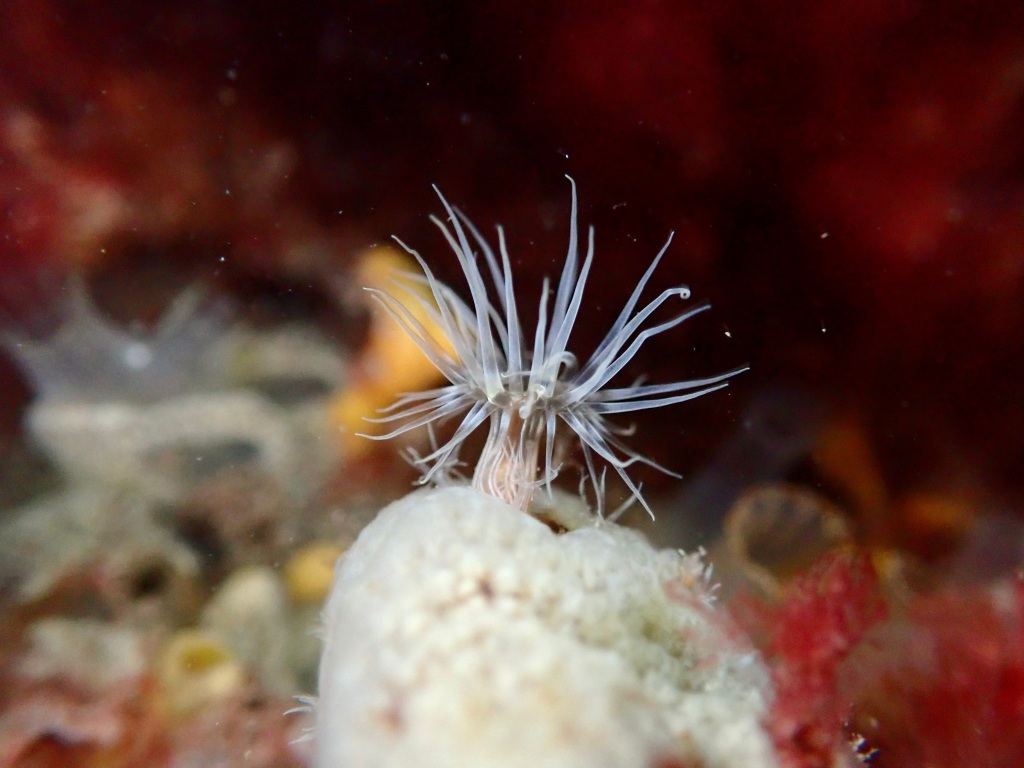
The intertidal is bursting with animal life, the shape, size, and color of which are often foreign to us land-dwellers. Many animals disguise themselves as plants while other things that look like plants are really animals. It can take time to learn to recognize all the kinds of animals you’ll encounter in the intertidal, but today we’ll look at just a few of the animals that you might mistake for plants while exploring the tide pools
Sponges
Phylum Porifera
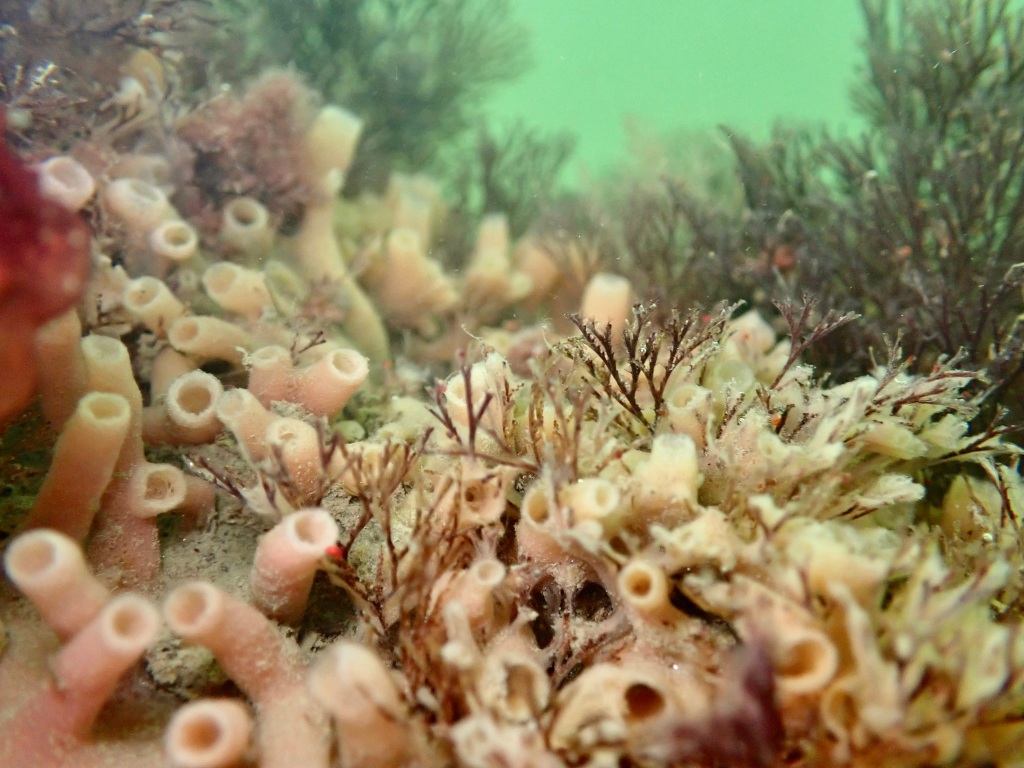
Sponges are some of the simplest animals on earth. They lack internal organs and true tissues which means no brain, no heart, no nerves, no digestive system, basically no anything. But unlike plants, they can’t make their food from the sun and they have cells that resemble other animals, so animals they are.
Sponges are sessile, growing over rocks or other substrate never moving their entire lives. They are filter feeders, pushing water through a central cavity where they pull out tiny plant or animal matter that they use as energy. Sponges are quite common in the intertidal and come in a wide range of colors, textures, and sizes. The closest familiar life forms they look like are plants or mosses, but look for siphons on the surface of the animal, the tiny holes they pump water through to feed. Sponges are food sources for a variety of mollusks, crustaceans, and other small invertebrates.
Bryozoans
Phylum Bryozoa
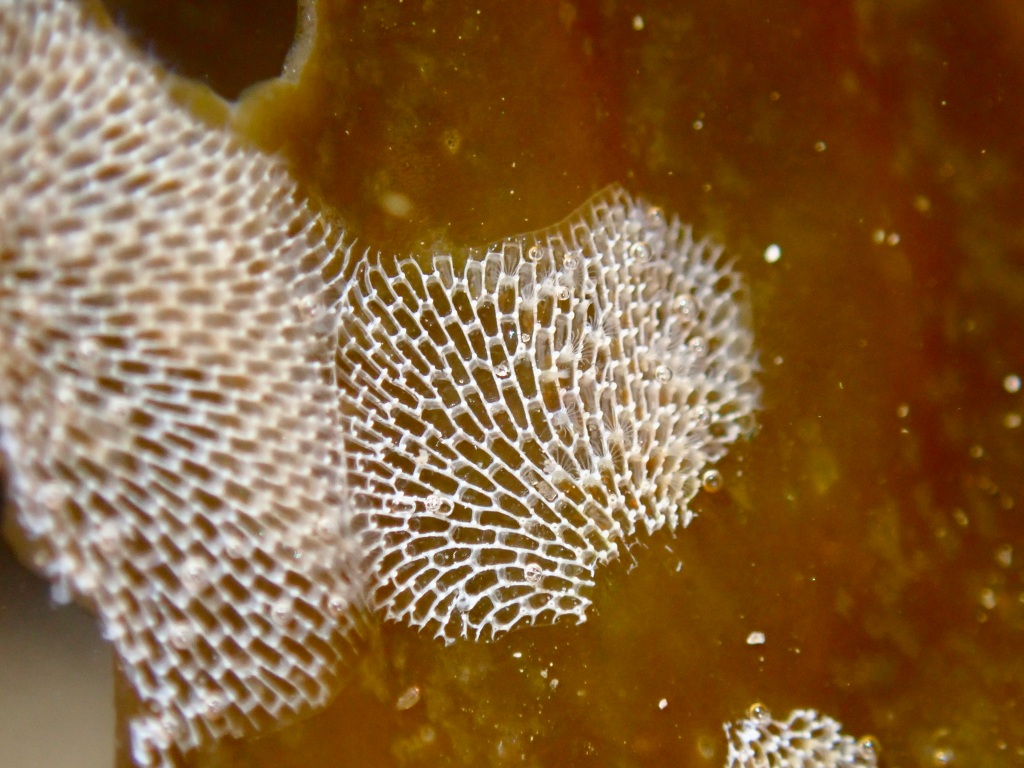
Bryozoans have a phylum all to themselves (Bryozoa) and are unlike anything you will find on land. Commonly called moss animals, bryozoans often live in large colonies of individuals, much like corals. They, too, are sessile, staying put on the rock, algae, or other animal they settled on. Bryozoans are rather small and even large colonies appear like a film laid over another surface. Unlike sponges that can either encrust (grow over the substrate in the same shape) or form their own structures (like barrels or tubes), bryozoan grow in sheets, fans, or brushes.
A colony of bryozoan is made up of individual animals, called zooids, that are not fully independent as some gather food through filtering while others focus on reproduction. Each of these tiny animals has a wall and a “crown” with even tinier tentacles that reach out into the water column. The entire colony is connected and shares resources, almost making it seem like one animal.
There is nothing like bryozoans on land and these moss animals are understandably often mistaken for plants or algae. Lacy bryozoan is one of the most common in Californian waters and also coasts kelps leaves in large sheets.
Tunicates
Subphylum Tunicata
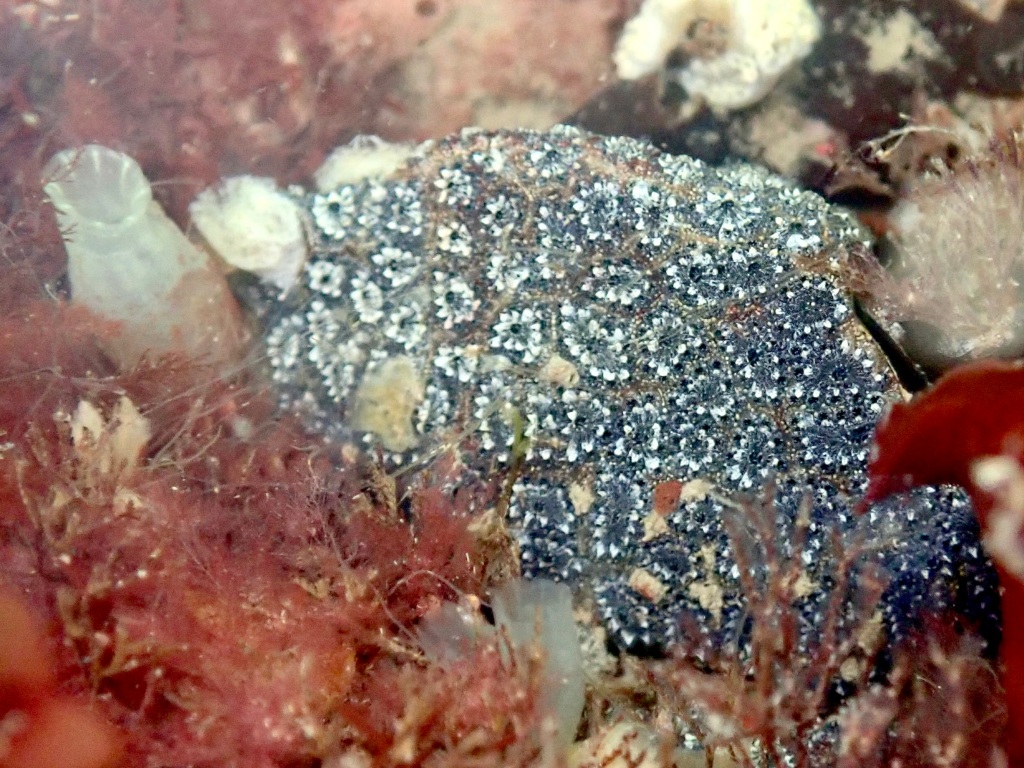
Tunicates often look like sponges, but they could not be more different. Often called sea squirts, these animals are some of the only invertebrates that have a “spinal chord” of sorts, and they are very complex in anatomy. However, they are rather similar to sponges in appearance and can be difficult to tell apart. Tunicates are often barrel-shaped and while most are sessile (non-moving), some are free-swimming, or free-floating, you might say. They come in a variety of colors and patterns and are filter feeders like nearly all sessile invertebrates that filter out plankton and other particles from the water to feed. There are varieties of tunicates that are both solitary and grow in colonies.
In the intertidal, tunicates are less common than other plant-look-a-like animals. They can be seen in the low intertidal or while dock fouling as they easily live on the undersides of floating docks. The star tunicate (Botryllus schlosseri) is one of the most commonly seen sessile tunicates in California but is striking in appearance. Sea pork (Aplidium californicum) is free swimming and is often left washed up on beaches at low tide.
Anemones
Order Actiniaria
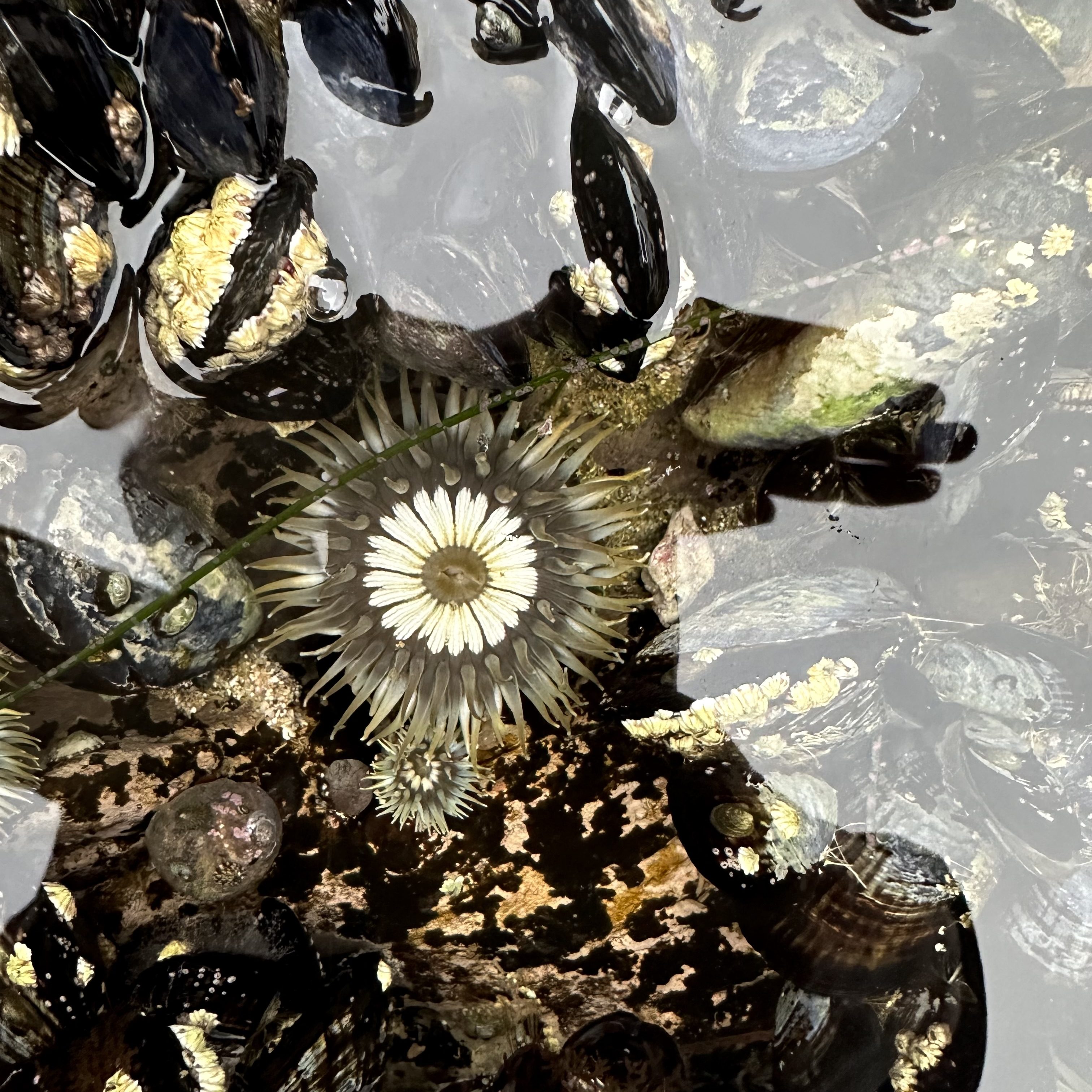
It’s hard to visit the intertidal on the Pacific Coast and not admire the anemones, flower-looking animals related to sea jellies and corals. Many a casual beachgoer has wondered if they were plants or animals, and in fact, the symbiotic algae that lives inside them does perform photosynthesis like plants. The anemone can use some of this energy in addition to what it can catch with its stinging tentacles that resemble the petals or leaves of a plant. Anemones might be the most convincing of the plant-look-a-likes, but they are actually quite mobile, able to use their strong, suctioning foot to move about. But most individuals choose to stay put after they have found a spot they like.
The Eastern Pacific is well known for its abundance of intertidal anemone species and individuals. The aggregating anemone (Anthopleura elegantissima) can create genetically identical colonies of thousands of individuals, smothering entire boulders in their waving tendrils. But other intertidal zones aren’t dominated by these creatures and seeing one can be a treat.
Hydroids
Class Hydrozoa
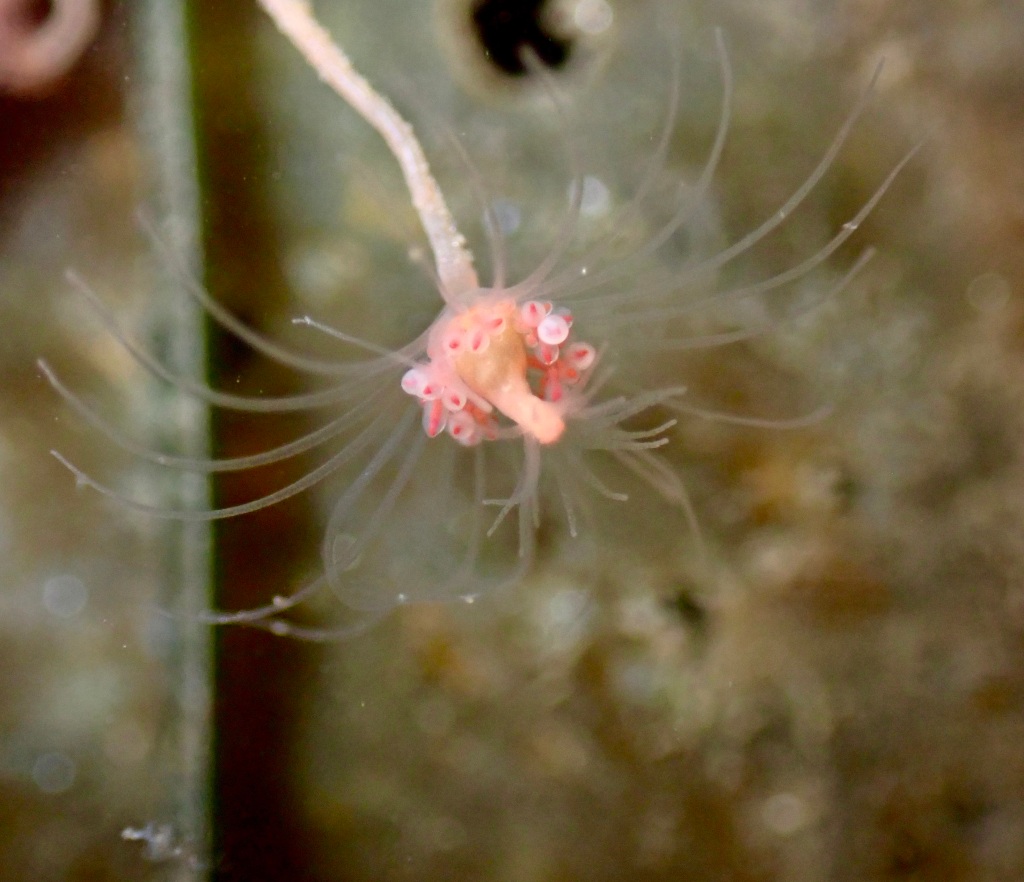
Another relative of jellies and anemones are hydroids, a predatory plant-look-a-like that is unusual in most intertidal environments. But if you do see one, you might mistake it for an intricate, aquatic flower. With groups of sessile and non-sessile individuals, hydroids are some of the most diverse-looking animals on this list. All possess stinging cells, called nematocysts, that all cnidarians (sea jellies, corals, anemones, etc) possess. Using these stinging tentacles, they capture prey, most often microscopic zooplankton. Like bryozoans, they most often live in colonies where individual animals are specialized for specific tasks such as reproduction, feeding, or locomotion if the animals are free-living.
The hydroids that look like plants are most often sessile, permanently attached to a rock or the underside of a dock, and are often solitary. However, colonial, free-living hydroids are often washed up on the shore after storms or during very low tides. Colorful and intricate animals that don’t resemble any other group are often hydroids.
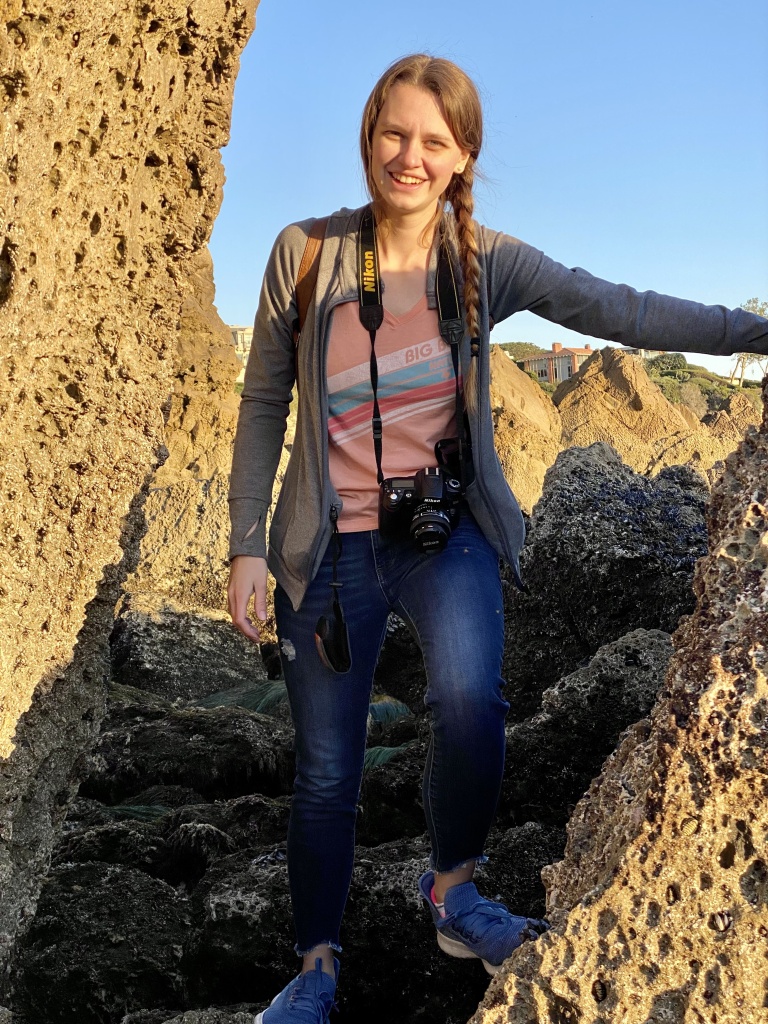
Categories
tags
Subscribe to the blog
Sign up to receive weekly emails with tide pooling information and guides so you never miss a post!

Leave a comment